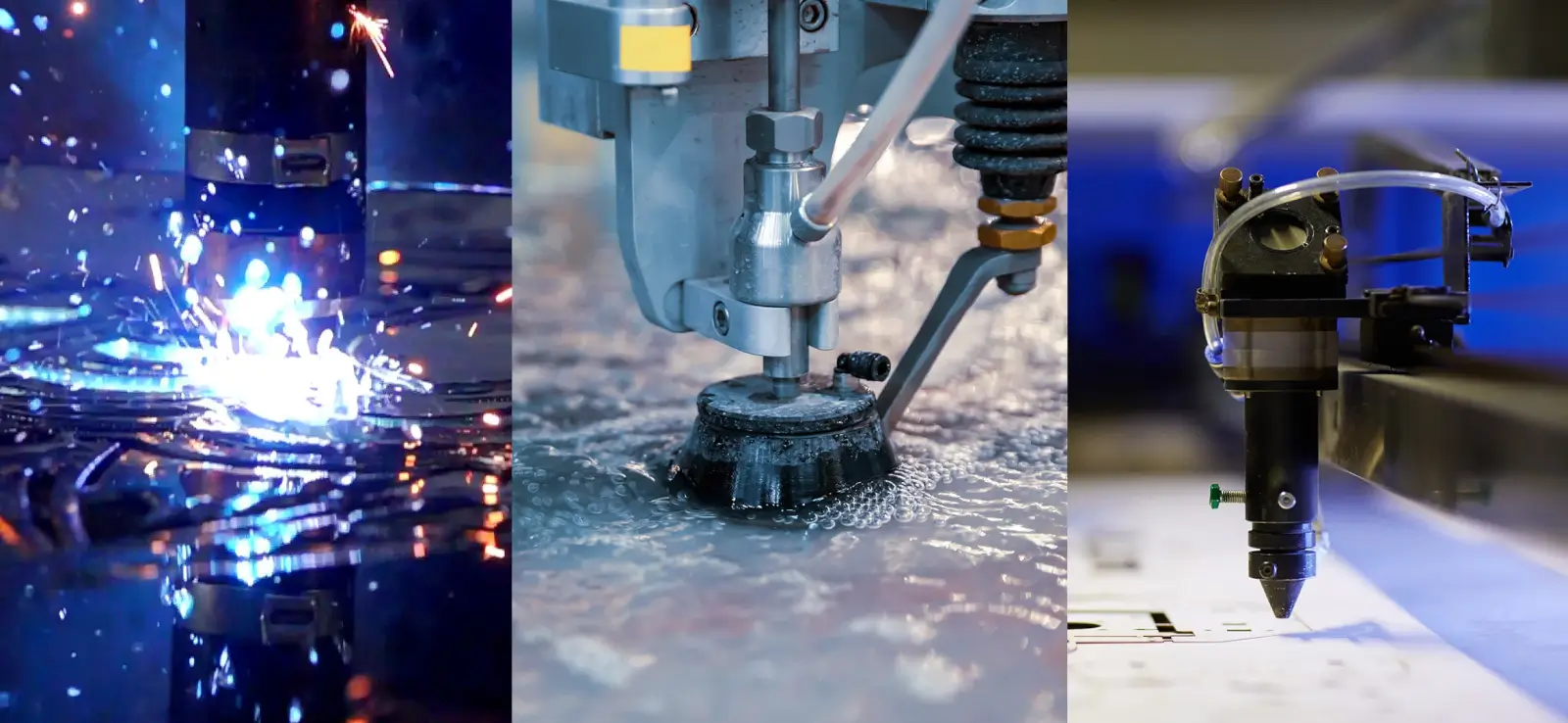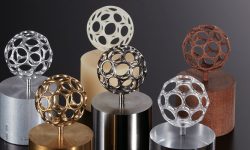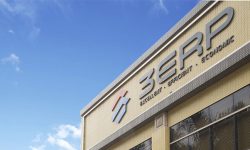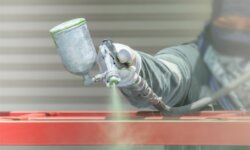For industrial manufacturing processes like sheet metal fabrication, machinists have several pieces of cutting equipment available to them. In addition to standard CNC machines that use sharp metal cutting tools, there are other options such as laser cutters, water jet cutters, and plasma cutters.
Each of these industrial tools has its own unique advantages and suitable applications. While all are widely used in sheet metal fabrication, the processes of laser, water jet, and plasma cutting can be deployed for different situations depending on the material, sheet thickness, and required tolerance or edge quality.
This article aims to make a clear comparison between laser cutting, water jet cutting, and plasma cutting, looking at the basics of each technique, their respective pros and cons, and the suitable applications for each method.
What is laser cutting?
Laser cutting is a manufacturing process that uses a high-power laser to cut through materials via the process of vaporization. The laser may be a CO2, fiber, or diode laser, depending on the material and application. A fiber laser is often used for sheet metal.
Some laser cutters work by moving the material (workpiece) and keeping the optics stationary; others use a fixed workpiece and moving optics; others are hybrid systems. Laser cutting machines are typically fairly expensive compared to plasma cutters.
Advantages of laser cutting
- Very fast cutting speeds, especially for thin workpieces such as sheet metal
- High level of accuracy and precision
- Compatible with range of materials
- Lowest kerf widths of comparable processes, around 0.4 mm
- Excellent surface quality
- Low operational cost compared to comparable processes
Limitations of laser cutting
- Not ideal for shiny metals since laser beam can be reflected
- Cutting speeds severely reduced for thick workpieces
- Can be complicated to set up optics
What is water jet cutting?
Water jet cutting (waterjet cutting) is a manufacturing technique that uses a CNC water jet cutter to cut through various materials. This machine uses a high-pressure pump to force out a high-pressure jet of water — typically in the range of 30,000–90,000 psi — that can cut through the material.
For hard materials like sheet metal, the water is mixed with an abrasive substance such as garnet or aluminum oxide, increasing its cutting power.
Because water jet cutters generate minimal heat — in fact, the water also acts as a coolant — they are ideal for metals with a low melting point that might otherwise deform when cut with a metal cutting tool or laser.
Advantages of water jet cutting
- Does not create a heat-affected zone, reducing warping and allowing for features like sharp corners and internal radii
- Compatible with range of materials
- Can produce intricate and complex cuts
- Very high level of accuracy and precision
- Higher cutting edge quality than comparable processes
- Low kerf widths around 0.6 mm
Limitations of water jet cutting
- Slower than comparable processes
- Higher operational cost than comparable processes
- Noisy process (not relevant to customer)
What is plasma cutting?
Plasma cutting is another type of manufacturing process for cutting materials like sheet metal. Instead of a sharp tool, laser, or water jet, it uses an accelerated jet of hot plasma to cut through electrically conductive materials. Suitable metals for cutting include steel, stainless steel, aluminum, brass, and copper.
During the plasma cutting process, the plasma cutter makes a complete electric circuit by generating a channel of electrically ionized gas (plasma) through the workpiece. The thickness of the workpiece does not limit the power of the cutter.
CNC-controlled plasma cutters are less expensive than laser or water jet machines, with operating costs also relatively low.
Advantages of plasma cutting
- Can cut through very thick workpieces without compromising cut quality
- Fast cutting speeds for thick or thin metal
- Low machine and operating costs
Limitations of plasma cutting
- Limited to electrically conductive materials
- Less accurate and precise than comparable processes
- Poor edge quality; kerf widths around 3.8 mm
- Emits fumes
Quick comparison: laser vs water jet vs plasma cutting
Laser cutting | Water jet cutting | Plasma cutting | |
Cutting precision | High | Very high | Moderate |
Kerf width | 0.4 mm | 0.6 mm | 3.8 mm |
Material range | Wide | Wide | Narrow |
Cutting speed (thin) | Very fast | Moderate | Fast |
Cutting speed (thick) | Moderate | Slow | Fast |
Operating cost | Low | High | Low |
Machine cost | High | High | Low |
The table above shows the respective strengths and weaknesses of laser cutting, water jet cutting, and plasma cutting.
In summary, laser cutting is the best process available for the fast and precise cutting of thin-gauge sheet metal, water jet cutting is best for for ultra high-precision cutting when speed is not a priority, and plasma cutting is best for cutting thick workpieces made from conductive metals and alloys.
3ERP has years of machining and sheet metal expertise and can handle your next laser cutting, water jet cutting, or plasma cutting project. Request a quote or contact us for advice regarding the best cutting process for your parts.








